I am very pleased to report that I’ve been running pain-free for about four weeks. I give enormous credit to Doyle & Taylor Physical Therapy in Annapolis and also have to admit that a reduced weekly running schedule (3 days) combined with diligent strength exercises and stretching have allowed me to resolve the sources of my hip pain. I’m not entirely convinced the pain is gone for good but I am most definitely back to my normal running pace, comfort level and optimism. Continue reading
Tag Archives: Stretching
Hump Day Hill Work-Outs
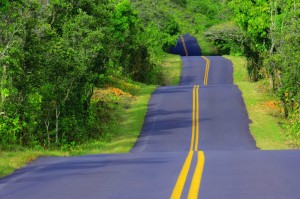 Wednesdays, hump days, are hill work-outs. I wonder if that’s why Bart Yasso put hills on Wednesdays, to help us get over the proverbial hump. Or, at least that’s the work-out on the fall marathon training schedule he put together that myself and probably hundreds of other runners are following. I will definitely be coming back to the marathon training topic but for now I want to focus on hills.
Wednesdays, hump days, are hill work-outs. I wonder if that’s why Bart Yasso put hills on Wednesdays, to help us get over the proverbial hump. Or, at least that’s the work-out on the fall marathon training schedule he put together that myself and probably hundreds of other runners are following. I will definitely be coming back to the marathon training topic but for now I want to focus on hills.
Just like with intervals, I believe I have a love/hate relationship with these work-outs and I’m sure I’m not alone. On today’s hills (which happens to be a Thursday…sometimes you have to tweak the schedule to fit this thing called life!) I spent some time debating whether I would choose intervals or hills as my preferred torture work-out. Halfway through the work-out I thought I was leaning toward intervals, but by the time I finished and was thinking “it wasn’t that bad” I guess I could pick hills. Of course, I have that same thought at the end of intervals too; I guess it’s all mental! What about you; do you prefer hills or intervals?
Getting Over the Hump
Bart’s schedule doesn’t start out lightly. In the 16-week plan the first eight are hills and they start at 6 miles. We spend four weeks at 6 miles, then move up to 7, then 8, then back down to 7, and week eight has 8 miles of hill repeats.
My running routes are not in the flattest part of the world but steady hills are also somewhat tricky to come by. In order to do the six mile route I mapped a loop just over two miles in my neighborhood that starts out flat for about a half mile for a warm-up and then goes straight into four uphill climbs, has another half mile flat, and then two more hill climbs before starting all over. To do the six miles I obviously repeat this loop three times.
I find that I really need the entire first loop to get my body and legs warmed up. I can feel the tightness in my quads and hamstrings on the first set of hills but by the first real recovery they usually loosen up. I try to keep a steady pace on the flats that isn’t too fast because I know I always push harder and run faster up the hills. I also try not to fly down the downhills, and somehow on my route there are really only two and a half downhills. A Runner’s World article shared that when running downhill it’s best to use your arms for balance and rather than pump them or let them flap around, keeping them steady by your sides will conserve energy for when you really do need to pump them to get up the hill.
Whether going up or down hill I try to focus on keeping my form consistent. I try not to lean too far forward or too far back and keep my footfalls relatively just under my body. I also try to keep my breathing consistent. I don’t want to be panting the entire way uphill otherwise I spend more time trying to catch my breath on recovery rather than just let my body relax a little before the next hill. All this is easier said than done but if you’re thinking about these things then you’re less likely to focus on how steep or long the hill is that you’re about to climb.
The first time I ran the hills I noticed that my hip flexors were a little sore in addition to the tightness I felt in my hamstrings. I remembered reading many times during my research on ITBS that these muscles take a beating on hills and should be strengthened and stretched well so that they can support the extra work required to run hills. To strengthen my hips I’ve added hip raises to my work-outs and do 100 hip raises twice a week. It’s not a ton but it’s better than nothing. Because I am also triathlon training I think the cycling and swimming help strengthen these muscles as well as give them a break from how they’re used in running.
I have also added the foam roller back into every stretching routine. After any work-out I spend time doing abs and core strengthening as well as stretching and I make sure to roll each leg in the quad and hamstring area 5-10 or 15 times depending on how I feel. I only needed to experience ITBS once to know that it’s worth taking preventive measures to prevent.
As daunting as I find the hill work-outs on the training schedule, the fact that I had to walk up the hill in the half marathon I did this summer still bothers me. I don’t want to have to do that again and if it takes running hills on every hump day (or Thursday or whatever day happens to fit my life schedule best that week) then I’m willing to do it.
Pilates for Runners: Interview with Lynda Lippin
Twitter has been, and continues to be, an amazing resource for me in both my personal and professional endeavors. On a daily basis I connect with new people on twitter who are informative, inspiring, entertaining, and motivational, and who share their passions, resources, ideas, challenges, and solutions with their followers. In the health, running, and fitness facets of my life this has been incredibly helpful as I have had many of my own questions answered by others on Twitter and have been able to constantly find information of interest to me as well as share my own stories and experiences with like-minded followers.
One of the first people I connected with on Twitter is Lynda Lippin, a Pilates instructor in the Caribbean. After a while of tweeting back and forth and learning various Pilates tips from her, I decided to interview her for this blog and asked if she’d be willing to discuss the topic of Pilates for runners to which she enthusiastically agreed. Following is the interview which I found insightful and helpful and hope you will too. Continue reading
Finding Flexibility
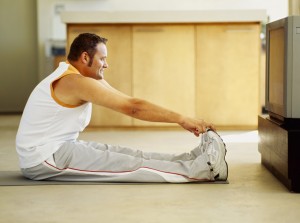 This weekend I was in the Sandy Springs area of Atlanta, Georgia, visiting a girlfriend of mine for her baby shower. One morning I went for a short 2-mile run around the neighborhood we were staying in which was filled with hills of all kind, a stark contrast to my own neighborhood. I started out on a sharp decline, flattened out for a bit, pushed through a gradual but not too long incline, flattened out, then had a long gradual incline, and finally a steep but not too long incline to finish the run. Needless to say, my legs were not used to the number of hills and the variety of inclines I experienced in Atlanta.
This weekend I was in the Sandy Springs area of Atlanta, Georgia, visiting a girlfriend of mine for her baby shower. One morning I went for a short 2-mile run around the neighborhood we were staying in which was filled with hills of all kind, a stark contrast to my own neighborhood. I started out on a sharp decline, flattened out for a bit, pushed through a gradual but not too long incline, flattened out, then had a long gradual incline, and finally a steep but not too long incline to finish the run. Needless to say, my legs were not used to the number of hills and the variety of inclines I experienced in Atlanta.
Sitting with my pregnant friend who is also an apprentice in the TAP pilates instructor program I started to pepper her with pilates questions while stretching. I’ve always struggled with the single leg stretch because I can’t seem to straighten my legs the whole way which frustrates me and also means I’m not benefiting from the exercise as much. As I lay on the ground she stood above me holding one leg up straight and pushed it toward my head. It was the straightest my leg had ever been and I instantly felt the stretch run through my hamstrings. She then asked me to relax my quad muscles. After several tries at what I thought was relaxing, my quads were still fully flexed. I couldn’t relax! Continue reading
Finding The Knots
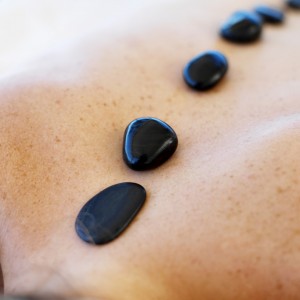 There are several names that came to mind for this post: “That’s the Spot!” “Ouch!” “Digging Deep,” “Seven,” and plenty of others, some of which sounded totally inappropriate and others that could be misleading. So as not to leave you wondering what all these possible post names relate to, they are tied to the deep tissue sports massage I had over the weekend.
There are several names that came to mind for this post: “That’s the Spot!” “Ouch!” “Digging Deep,” “Seven,” and plenty of others, some of which sounded totally inappropriate and others that could be misleading. So as not to leave you wondering what all these possible post names relate to, they are tied to the deep tissue sports massage I had over the weekend.
I have had one other true massage in my life and it was the most amazing, relaxing, comforting, soothing experience ever. My sports massage was the absolute opposite. After talking to some personal trainers and reading plenty of articles and forum posts about various ways to “treat” IT band pain, I was convinced that I needed to see a massage therapist. It made sense to me that if the masseuse could not find anything wrong with the muscles in my leg then I would have a much larger problem at hand. So I dug out a gift card waiting to be used and made an appointment for a 60-minute deep tissue sports massage at a local spa and salon.
I was shown into a cozy room with candles lit, calming melodic music playing, and I snuggled under wonderfully heated sheets thinking how nice it would be to doze off while the massage therapist fixed all my IT band problems. Continue reading
Post-Race Recovery
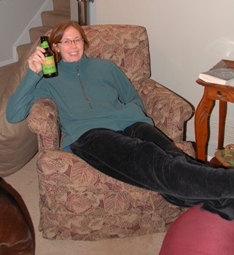
A much-deserved beer was part of my post-race recovery.
For many years, the longest run I ever trained for was a 10K. I usually ran consistently, but would really ramp up a training program about 2-3 months prior to the 10K. Inevitably after the 10K I was always likely to fall off the running bandwagon, sometimes for a week or two, sometimes for a month or more. The last several years I have participated in the local 10-miler and would train for that for months only to also take the same “break” from running as I had once the 10K was complete. Weeks or more would go by with no running at all.
These lapses from running were by no means my intentional post-race recovery plan. Perhaps it was the time of year, my busy work schedule, my lack of motivation once the run was complete, but I never had a post-race plan and so I would simply drift away from running for a bit.
Training for a marathon is slightly different than training for a 10K or 10-miler but I admit to having had the same fear that I might fall into a non-running slump post-race. This has been a strange week though because I feel like in a way I lost a little part of me. People have written about this strange feeling of loss post-marathon and I never really understood that until now. You spend months and hours of your life preparing for one moment and all of a sudden when it’s over so is everything you’d been working toward. You have achieved what it is you set out to achieve and so you are essentially right back where you started. Clean slate. This is an opportunity that you have to be willing to run with again.
Develop a Mental and Physical Plan
Post-race recovery for me is much more mental than it is physical, though the physical is absolutely critical to long-term success. For three days I have felt antsy, guilty for not running, off-kilter without running as part of my morning routines, and yet slightly relieved that I have been letting my body relax, be still, and repair. My past behaviors make me fear a little bit that I will stall running, but I am grateful for knowing how much I have come to love this sport and my eagerness to be running and training again will no doubt overpower my fears. The fact that I continue to be consumed with thoughts and plans for “the next one” are also encouraging.
So what is my plan? This first week has included very simple stretching, icing, foam roller massaging, yoga, and easy activity. While I understand that my muscles, and my IT band in particular, need time to repair I am ready to get back into cardio work that will boost my heart rate. I’m grateful that I learned to love the bike recently and will likely use the next week to log time on the stationary bike at least 4 days with some strength training and Pilates mixed in. That gives me three weeks to build back up my running and hopefully increase my pace to 8-minute miles for my 10K race April 4th. A bit ambitious? Maybe. Worth trying? Definitely.
My post-race recovery plan is entirely based on feeling good, remaining focused, and building back up at a level that is comfortable for me. I could not run the marathon alone and I cannot recover alone. I have learned from others about what worked for them and have customized a stretching, cardio, and new training plan that works best for me and my goals. I plan to focus on the muscles that felt weakest during my last run (lower back, glutes, ankles) and will be including more dynamic stretching to the beginning of each work-out as well as proper cool-downs after.
Post-race recovery for me will be a very new beginning and I look forward to starting fresh.
First Marathon: What Went Wrong
 One of the things I have enjoyed most about having run a marathon is how much I learned along the way. I am very aware that I have barely scratched the surface of most topics related to running and training and I find it encouraging that there is always something new to learn about the sport. Part of running is science and understanding how the body works and how all the muscles work together, and part of running simply personal and figuring out what works best for you.
One of the things I have enjoyed most about having run a marathon is how much I learned along the way. I am very aware that I have barely scratched the surface of most topics related to running and training and I find it encouraging that there is always something new to learn about the sport. Part of running is science and understanding how the body works and how all the muscles work together, and part of running simply personal and figuring out what works best for you.
Training
Considering I was able to finish the marathon, I think it’s safe to say that not that much went wrong, but there are certainly some lessons learned from this first experience and some things I will do different next time. I’ve mentioned before that my running friend and I took a 16-week plan and crammed it into nine weeks. Definitely lesson number one. Continue reading
Running Questions: Knee Know-How
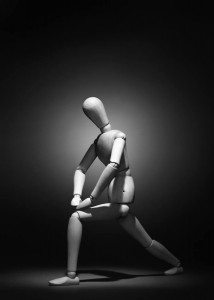 At the end of a long run, the legs are inevitably tired which is to be expected. I understand the important role that the knees play in running and that they certainly carry a lot of the body’s weight and movement. Doing core exercises and strengthening and stretching the pelvis, hips, and legs will help the knees and legs remain strong during a run. Without a strong core to keep the body in a nice straight line while running, your knees will bear the brunt of any sideways movement of the body and you’ll feel the pain later.
At the end of a long run, the legs are inevitably tired which is to be expected. I understand the important role that the knees play in running and that they certainly carry a lot of the body’s weight and movement. Doing core exercises and strengthening and stretching the pelvis, hips, and legs will help the knees and legs remain strong during a run. Without a strong core to keep the body in a nice straight line while running, your knees will bear the brunt of any sideways movement of the body and you’ll feel the pain later.
I’m pretty cognizant of my form while running but I know that I’m not nearly as consistent as I’d like to be. Like anything, establishing and maintaining proper running form takes practice. I feel as though I have a pretty straight gait and that I’m not too wobbly while running so I believe my knees are not being asked to do much more than their normal functions. However, at the end of a long run, all I want to do is stretch my knees somehow. When I squat up and down that seems to help, but I don’t know that it’s actually stretching anything. Going up and down stairs after a long run is often a chore. I have to go slow and hold the handrails. The pain doesn’t last long but it sure is uncomfortable.
After doing some researching, talking to doctor friends, reading other blogs, forums, and articles about various types of knee pain I have self-diagnosed my knee pain to be related to my Iliotibial (IT) Band, which means it is not knee pain at all. Continue reading
My Running Questions: Introduction
After more than 11 years of running, I am glad to finally be grateful for how running makes me feel and for what the body can be trained to do. I’ve learned a lot from this marathon training but also from reading articles, blogs, forums, and checking in with my training partner and running friends on a regular basis. Perhaps the thing I’ve learned the most is how much I still have to learn. It goes without saying that you never stop learning, and almost every run presents me with a new question about the sport or training and I definitely enjoy discovering the answers to my questions.
 One of the things that stumped during my first long runs was how tired I became soon after the run was over. I consulted a runner friend who is also in trainer training and she immediately identified for me that I was not fueling up on runs longer than an hour. It didn’t matter that I wasn’t hungry or thirsty during those runs; my body needed energy to keep going. I was sapping all my energy while running so I had nothing left to power me through the rest of the day. Her advice matches everything I’ve read since which is that on runs longer than an hour you should have water and/or gels to fuel you up. Now I know. I carry a fuel belt with me for those long runs and while a little cat nap afterward is still rewarding, I can make it through the rest of the day without needing to crawl back into bed. Continue reading
One of the things that stumped during my first long runs was how tired I became soon after the run was over. I consulted a runner friend who is also in trainer training and she immediately identified for me that I was not fueling up on runs longer than an hour. It didn’t matter that I wasn’t hungry or thirsty during those runs; my body needed energy to keep going. I was sapping all my energy while running so I had nothing left to power me through the rest of the day. Her advice matches everything I’ve read since which is that on runs longer than an hour you should have water and/or gels to fuel you up. Now I know. I carry a fuel belt with me for those long runs and while a little cat nap afterward is still rewarding, I can make it through the rest of the day without needing to crawl back into bed. Continue reading
